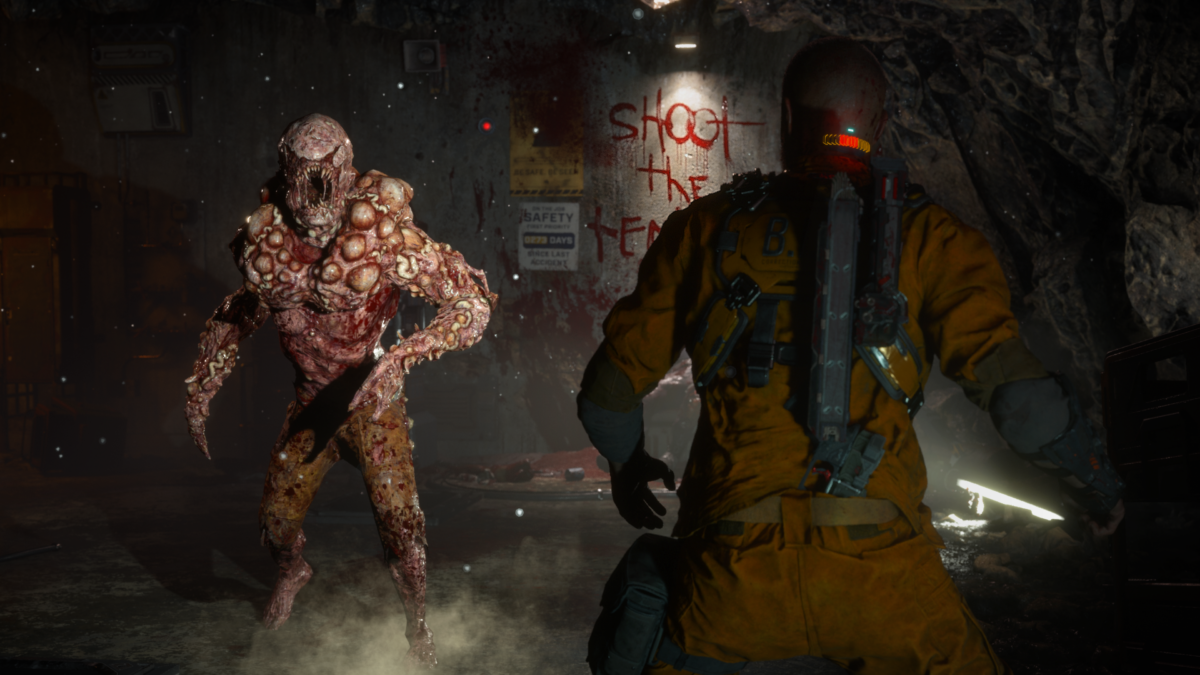One thought ran through my head as a nightmare creature separated it from the rest of my body: “I’ve missed this”.
Whether you’re a big fan of Dead Space or not, the fact remains that ever since the third installment in 2013, there hasn’t been anything like it. Sci-fi horror is woefully under-utilized in gaming, which is weird because almost every attempt has been excellent. Dead Space is great, and Alien Isolation is one of the scariest games ever made.
Since EA seemingly has no interest in making another new Dead Space game (although there is a remake of the first game coming), it was only a matter of time until someone else came along and did the job properly. Enter Glen Schofield, executive producer of the original Dead Space, and his new game studio, Striking Distance. The Callisto Protocol looks more promising with every bit of information we get on it, and now I’ve had some hands-on time with the game, I can confidently say it doesn’t disappoint.
[mm-video type=video id=01gg9pafg4ycgjp638t1 playlist_id=none player_id=none image=https://images2.minutemediacdn.com/image/upload/video/thumbnail/mmplus/01gg9pafg4ycgjp638t1/01gg9pafg4ycgjp638t1-f5f34a0964218e0eae59ce0671fe16c3.jpg]

The first thing I noticed when I started playing is how intensely you feel the world around you, both in terms of the oppressive atmosphere and an intuitive sense of space. You’re an inmate in an orbital prison that has become infected with something that transforms people into monsters. It can be difficult for an environment as sterile as a prison to stand out – everything’s made of colorless metal plating and pipes, after all – but The Callisto Protocol takes great care to make sure you always have a good lay of the land, except for when it doesn’t want you to.
The puzzle and exploration areas are wide, letting you see across the whole room easily and plan your route across. However, when the game wants to surprise you or put you on edge it will massively restrict your visibility with narrow corridors, sharp turns, and by turning off the lights.
This works alongside the fantastic soundscape, which never lets up for a second. In moments where you’re perfectly safe, you’ll hear the echoed screeches of a monster or a loud thump from the other side of a wall. The music is great but used sparingly – typically only when you’re in combat. The game knows just how terrifying silence can be, keeping your mind worrying about every little bump while it lines up a proper scare. You feel like you’re always about to be attacked, which is great at masking the moments when something is going to jump out at you.

In one such moment, I come across a health dispenser that’s placed right in front of a steam-filled corridor. I know I’ll obviously be attacked the moment I approach, yet when the creature launches itself out of the fog, I still almost fall out of my chair. When even the simplest tricks are effective, that’s the mark of a great atmosphere.
Of course, building tension is one thing, but the game really shines when that tension bursts into a combat encounter. You have three main forms of weaponry: a melee baton, a heavy pistol, and a grav gun that lets you pick up and throw enemies. Each one is fairly simple by itself, but they’re all limited in just the right way, which makes you constantly switch between them and use all three in every encounter.
The way each attack flows into the next is very satisfying, and the panicky adrenaline from being attacked lends greatly to the fast-paced thinking you’ll need to switch up your tactics on the fly. The controls are smooth, too. R2 is always the attack button, but pressing other buttons changes the weapon you use. R2 on its own is melee attack, L2 then R2 is ranged attack, and L2 + Square grabs an enemy with the grav gun before R2 is used to launch it – preferably into a fan blade that splits it open like a meat pinata. You can do so much with so few button presses and switching between them all quickly becomes muscle memory.

On top of that, there is an upgrade tree that lets you improve your weapons and learn new combat abilities. While I only got to try the early-game skills, what stuck out to me is how well they fit the character’s situation. You’re not some combat master, you’re sloppy and heavy with your strikes, but each technique you learn – like sweeping the legs to stomp on a creature’s head – feels like protagonist Jacob Lee is slowly learning and improvising to cope with this, ahem, alien situation.
I don’t know if more weapons will unlock as you go along (some suspiciously locked sections of the upgrade tree suggest there will be) but even if it’s just the basic three from start to finish, I’d be happy with that.
Given that The Callisto Protocol launches so close to the Dead Space remake, there’s a lot of pressure on it to perform, but if what I played is any indication, it will clear that bar with ease. It’s not a revolution for the sci-fi horror genre, but it may be the best iteration of it to date.
Written by Ryan Woodrow on behalf of GLHF.
[listicle id=1866520]
